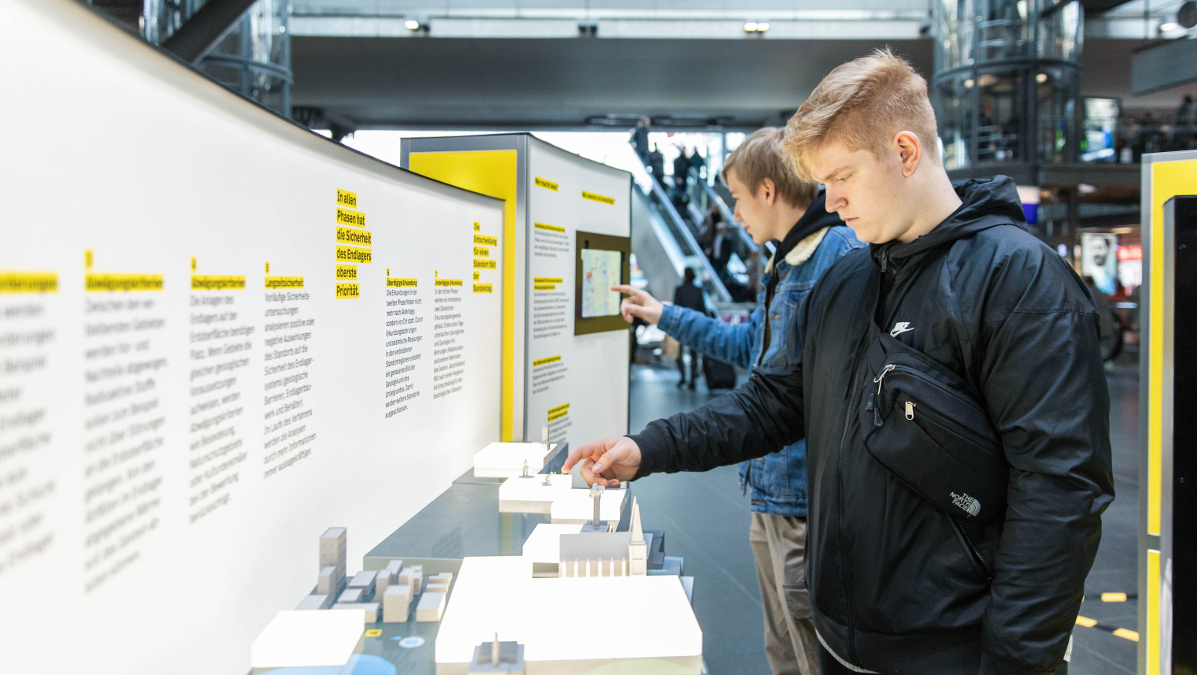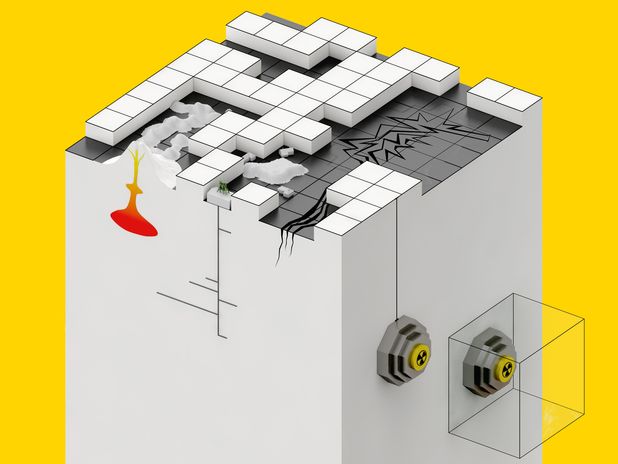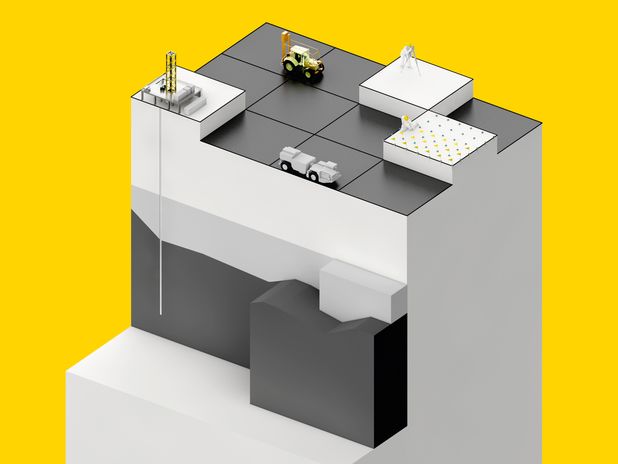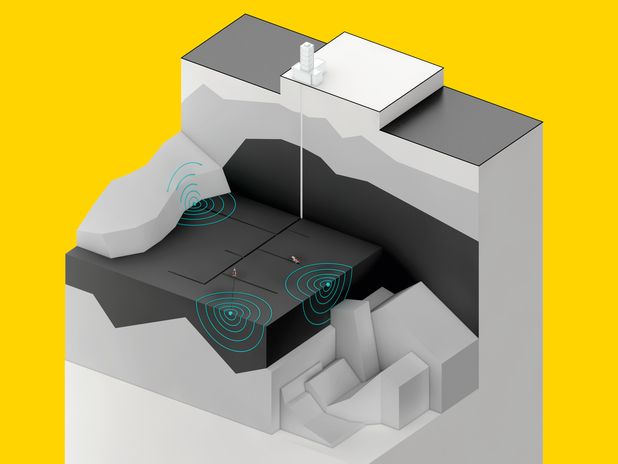The course of the search
All the German states and regions are involved in the search. Areas are being explored to see whether they are suitable during different phases of the search. Regions are excluded, assessed and compared until the best possible location for a disposal site remains at the end.

Phasing out the use of nuclear power
Following the accident at the Fukushima Daiichi nuclear power plant, the German Parliament decided by a large majority in June 2011 to phase out the use of nuclear power for commercially generating electricity by the year 2022. 1900 containers with 27,000 cubic metres of high-level radioactive waste will remain and it will be necessary to safely dispose of them in the long term. The Site Selection Act provides the framework for the individual stages in the procedure. It was further developed on the basis of recommendations by the Commission for Storage of High-Level Radioactive Waste and became effective in May 2017. It was legally determined at the beginning of the repository search procedure that a siting decision was to be made in 2031. However, according to current information from the Bundesgesellschaft für Endlagerung mbH (BGE), their work will take significantly longer than expected. The institutions involved are now evaluating the conclusions to be drawn from this for the procedure.
The course of the search
The site selection procedure starts with a “white map” – i.e. all the German states and all regions are included in the search. Areas are being examined based on existing geological data and explorations to see whether they are suitable. Regions are excluded, assessed and compared until the best possible location for a disposal site remains at the end.
1. Determining sub-areas

In the first phase, the company commissioned to conduct the search, the Federal Company for Radioactive Waste Disposal (BGE mbH), collects geological data from the federal states and evaluates this information in line with criteria laid down in law. Among these are exclusion factors like seismic activity, volcanic activity or damage to the bedrock caused by mining. BGE mbH also examines which regions meet the minimum requirements, in its view. For example, 300 metres of rock should separate the disposal site from the earth’s surface. A sufficiently strong layer of granite, salt or clay must surround the disposal site.
BGE mbH is publishing an interim report on the sub-areas for discussion so that members of the public can get an insight into the status of the work as early as possible. It has announced that it will be published on 28 September 2020. This will show which areas the company believes should be excluded because of their geology. The report does not represent a final decision about which areas should or should not be explored. This will not happen until the end of the first phase.
The publication of the interim report is also the starting point for the first participation format prescribed by law: the Sub-areas conference. The opening meeting held on 17/18 October 2020 marks the beginning. Its goal is to create a consistent information base for all those interested and to initiate the self-organisation of the conference. Local authorities, social organisations as well as citizens and scientists can then discuss the interim report on three consultation dates. The conference pools the discussions in a final report that BGE mbH then has to consider in its ongoing work.
Following a further evaluation of data, BGE mbH sends its suggestion for surface surveys of siting regions to BASE at the end of the first phase; BASE examines this. BASE also organises a regional conference in each of the possible regions to enable local citizens to get involved. At the end of the examination and participation process, BASE submits the suggestion to the German government. The elected representatives in the German parliament decide by law which regions should continue to be examined.
2. Surface exploration

In the second phase, surface exploration work takes place locally. BGE mbH explores the bedrock using exploratory drilling and seismic measurements. As a result, BGE mbH obtains a precise picture of the geology and uses this to suggest which sites need to be explored underground. Here, too, BASE examines this suggestion and the German parliament makes the final decision.
3. Underground exploration

In the third phase, BGE mbH sets up exploratory mines at two sites at least. Geologists explore the rocks using drilling and other methods. Based on those findings, BGE mbH suggests a site. BASE examines the results from the surveys and the participation procedure and submits the reviewed proposal together with its recommendations for the repository site with the best possible safety. The German parliament will once again make the final decision about the site by passing a law.
